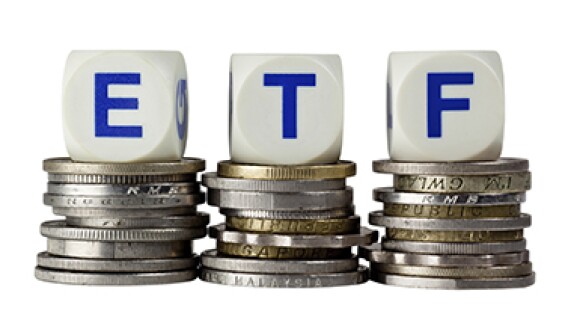My first job in the investment business was as an institutional broker. Off I went to Tokyo, Hong Kong and Australia with my list of great small-cap stocks (and small-cap ETFs) located in the Midwest.
Many Japanese institutions were hesitant to look at small companies they had never heard of before but Hong Kong and Australian money managers were intrigued. And their results were good!
It seems to me that many otherwise smart global investors overlook small-cap stocks. Having a basket of small-cap stocks (or small-cap ETFs...more on those in a bit) as part of your portfolio can soften the higher risk that comes with small-cap investing. The big attraction is, of course, more bites at the apple of high returns.
Smaller companies, primarily because of their lack of visibility within the investment community, often experience a “valuation gap” between their stock prices and their underlying fundamentals.
For international companies and especially emerging markets, this gap can sometimes present tremendous opportunities if you do your homework.
[text_ad]
Here are some of the common characteristics of small-cap stocks - all of which present opportunities and commensurate risks.
5 Reasons to Buy Small-Cap Stocks
Smaller Capitalization and Low Trading Volume
Small caps tend to be more thinly traded and, while this is a characteristic that can work both ways, it often presents a huge opportunity for shrewd investors. As a company grows its revenues and earnings over time and the public becomes more aware of its existence and future growth prospects, demand for the stock can jump sharply as demand for a limited amount of outstanding stock increases.
Potential Discovery by Analysts
While there are dozens of analysts covering a major stock like Kraft Heinz (KHC), many small-cap stocks are hardly covered at all. When a prominent analyst does pick one up, the results can be surprising.
Opportunity for Institutional Support
When large institutional investors learn about a new company with solid growth potential and good management, they often begin building positions and this can have a marked impact on stock prices. I recall many instances of a good presentation at an investment conference resulting in a small-cap stock soaring.
Flexibility & Growth Potential
Smaller companies can seize new opportunities and change direction quickly while big companies are like aircraft carriers or cruise ships; they take a long time to change direction.
The management of these companies tends to be more entrepreneurial and less bureaucratic. There is less corporate infighting since everyone knows each other on a personal basis. Many smaller companies cannot offer mega salaries and stock options are a very powerful performance motivator.
The ability to be nimble enables a small company to seize opportunities much faster than its large-cap stock brothers. This means potential double-digit growth, not plodding 3-4% growth.
Potential Takeover Targets
Of course big companies, with their hefty balance sheets, do come in handy as partners or, even better, when they swallow a small company at a hefty premium to market value. This means a nice payday for investors as well. Even if an acquisition does not take place, just the thought of it can be a nice level of support for a stock in a promising sector.
Three Small-Cap ETFs to Buy
Our Cabot Small-Cap Confidential advisory, headed by chief analyst Tyler Laundon, is dedicated to small-cap stocks. The 10 stocks in Tyler’s portfolio have an average gain of 94%. That’s not a misprint – 94%!!!
Meanwhile, my Cabot Emerging Markets Investor often recommends small-cap international stocks. (My portfolio, by the way, boasts an average return of 11.3%—not too shabby considering the -11% decline in emerging market stocks over the past year.)
Another route is to go with an exchange-traded fund, which is a basket of small-cap stocks.
For example, Van Eck’s Brazil Small Cap (BRF) offers 40% exposure to consumer staples.
The WisdomTree International Small-Cap Dividend (DLS) follows small-cap, dividend-paying stocks in the industrialized world outside the U.S. and Canada. WisdomTree weighs the companies in its basket based on annual cash dividends paid. Due to the dividend nature of the index, the fund focuses on value stocks.
Another small-cap ETF option for more growth-oriented investors is the SPDR S&P International Small Cap (GWX). This ETF has larger weightings towards consumer discretionary and technology sectors as well as more basic material companies.
You can see that small-cap investing is anything but small. The companies themselves may be unfamiliar and mysterious, but the opportunities for portfolio-altering returns is impossible to ignore.
If you need a little help identifying which small-cap stocks or small-cap ETFs to buy (aside from the ones I just mentioned), you can subscribe to Tyler’s world-beating Cabot Small-Cap Confidential advisory here or my more globally-focused Cabot Emerging Markets Investor advisory here. Again, both advisories are crushing their respective markets!
[author_ad]


